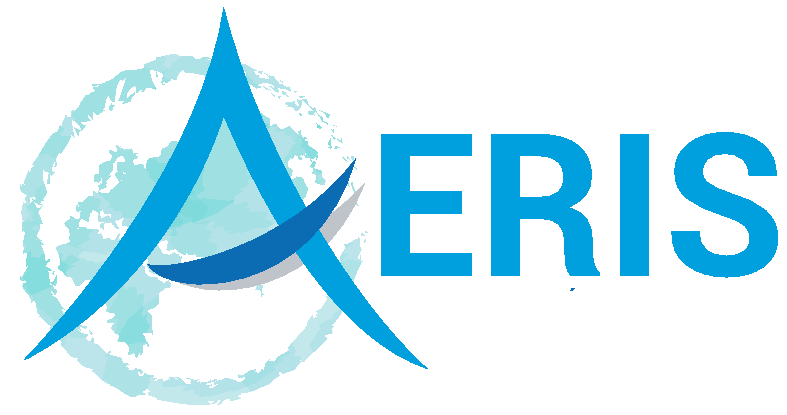Questions |
Answers |
1) Which is the difference between GEISA and GEISA-IASI? |
The GEISA-IASI database derives from GEISA. GEISA-IASI has been created with the purpose of assessing IASI measurements capabilities within the ISSWG (IASI Sounding Science Working Group), in the framework of CNES (Centre National d'Etudes Spatiales, France) /EUMETSAT (EUropean organization for the exploitation of METeorological SATellites) European Polar System (EPS) preparation. This is done by simulating high resolution radiance spectra data, in order to benefit as soon as possible from improvements in the knowledge of spectroscopic parameters and to ensure their continuous upgrade and maintenance during the fifteen years of life of the three already planned IASI instrument on board the Metop platforms.
Since the launch in 2006 of MetOp-A, GEISA-IASI is used as the reference spectroscopic database for IASI Level1 Cal/Val activities, using the “4A” (Automatized Atmospheric Absorption Atlas) LMD radiative transfer code (Scott, 1974 ; Scott and Chédin, 1981) in its operational release (4A/OP) distributed by Noveltis (http://www.noveltis.fr/4AOP/)
GEISA-IASI, is both an extraction within the IASI (and AIRS, as well) spectral range (599 - 3001 cm-1) and a continuous update of GEISA 2011. The two databases have a similar structure, comprising three independent sub-databases devoted respectively to: line transition parameters, absorption cross-sections, microphysical and optical properties of atmospheric aerosols. |
2) Consulting GEISA 2011 line transition parameters sub-database, I noticed “-0.9999” value for lower transition level energy. Is it normal ? |
Yes, this value indicates that information about this field was not communicated by the authors and remain unknown. Please see this page for details about all undefined values. |
3) For certain entries in the GEISA line transitions sub-database, the quantum identifications of the vibrational and rotational states are missing. Is it normal? |
Yes, this is normal and corresponds to transitions of lines which are presently not completely theoretically described. These kinds of transitions have been kept especially for planetary studies, when they are supposed to be helpful for the understanding of unknown atmospheric composition. |
4) What the reference temperature for the « intensity » of a line transition? |
This temperature is 296 K. |
5) Why is the line parameters description of the GEISA cross-sections sub-database different from the individual lines one: description by [Temperature/Pressure] couples and not by spectroscopic parameters as described in the GEISA line list format? |
Because of their atmospheric spectroscopic interest, certain compounds corresponding to heavy molecular species such as such as: chlorofluorocarbons (CFCs), hydrochlorofluorocarbons (HCFCs), SF6, and oxides of nitrogen (for example, N2O5) have been introduced in the GEISA cross-sections sub-database. The reason was that it became evident that spectroscopic information on individual spectral lines belonging to this kind of molecules could not be reasonably described in the traditional GEISA individual lines sub-database format (i.e. via, line wavenumber, intensity, halfwidth, etc.). The following approach was adopted to report spectral absorption cross-sections measured at atmospheric conditions:
The absorption cross-sections are determined through the following expression:
σ(ω) = (ln [Ι0 (ω) / Ι (ω)]) / ηι
where ω is a wavenumber(cm-1); σ(&omega) is the absorption cross-section (cm2 molecule-1); Ι0 (ω) and Ι (ω) are the intensities, at the wavenumber &omega, of the incident and transmitted radiation, respectively; Ι is the concentration of the molecules (molecule cm-3) and ι the optical path length (cm), at a temperature T and a pressure P. It is the σ(&omega) value derived from high-resolution experimental data that is cataloged in the GEISA cross-sections sub-database.
It is the σ(&omega) value derived from high-resolution experimental data that is catalogued in the GEISA cross-sections file. It is presented at several (T, P) combinations representing atmospheric layers given in commonly tabulated atmospheric models as well as conditions encountered. |
6) Does GEISA allow radiative transfer modeling ? |
GEISA is an interactive spectroscopic database which can be exploited in many fields of research, especially radiative transfer simulations. GEISA is designed to facilitate accurate and fast forward calculations of atmospheric radiative transfer using a line-by-line and (atmospheric) layer-by-layer approach. |
7) What is the origin of the spectroscopic data included in GEISA ? |
The spectroscopic data archived in GEISA are directly provided by authors of published papers. These data could be derived experimentally or theoretically. In fact they represent very often the results of associated expertises and efforts in both aspects.
The GEISA website gives a complete description of the origin of each data file with associated references on authors and related articles.
- GEISA 2011 references
- GEISA 2003 references
- GEISA-IASI 2011 references
- GEISA-IASI 2003 references
|
8) What is the format description of a “GEISA 2011 line transition parameters sub-database” entry ? |
The detailed format of such an entry is given in this page.
For GEISA 2003 Format, please see this page.
|
9) Which are the N2O isotopologues? |
Molecule | Molecule Code | Isotopologue Code | Formula |
N2O | 4 | 446 | 14N14N16O |
447 | 14N14N17O |
448 | 14N14N18O |
456 | 14N15N16O |
546 | 15N14N16O |
458 | 14N15N18O |
548 | 15N14N18O |
556 | 15N15N16O |
The complete list of molecules and isotopologues can be viewed at this page.
|
10) How much molecules are in GEISA 2011 line transition parameters sub-database? |
The GEISA 2011 sub-database of line transition parameters involves 50 molecules (111 isotopic species) and contains 3,807,997 entries, in the spectral range from 10-6 to 35,877 cm-1. |
11) How many option(s) can you use in the interactive interrogation section? |
There are six options:
- Information
- Content analysis
- Histogram analysis
- Database extract
- Transition analysis
- Transition list
Please, see this page for further explanations. |
12) Is there a downloadable program for reading GEISA 2011 line transition parameters sub-database format. |
Yes, you can download a FORTRAN program :
- GEISA 2011 program
- GEISA 2011 format
- GEISA 2003 program
- GEISA 2003 format
|
